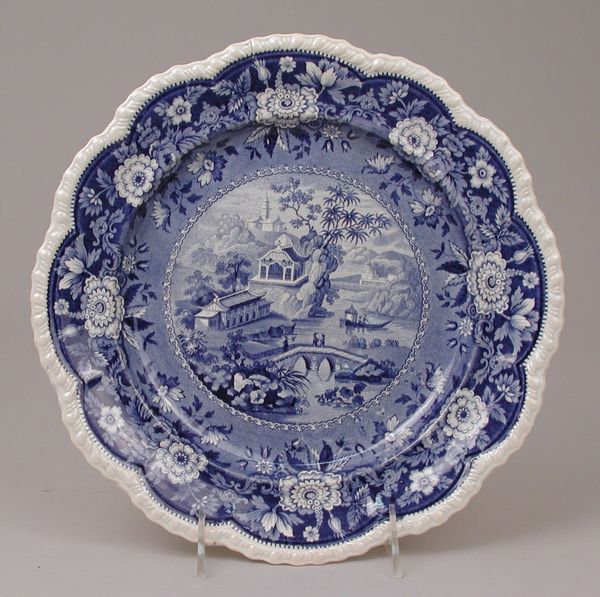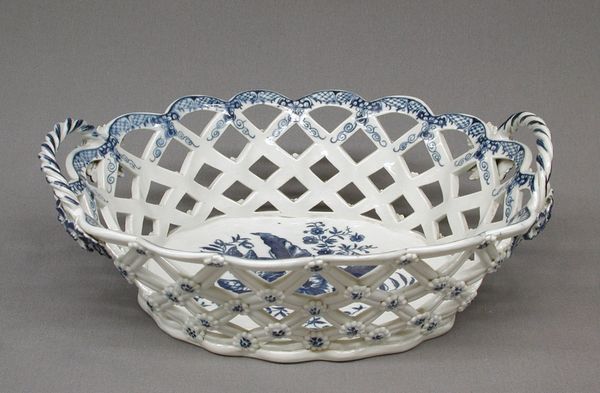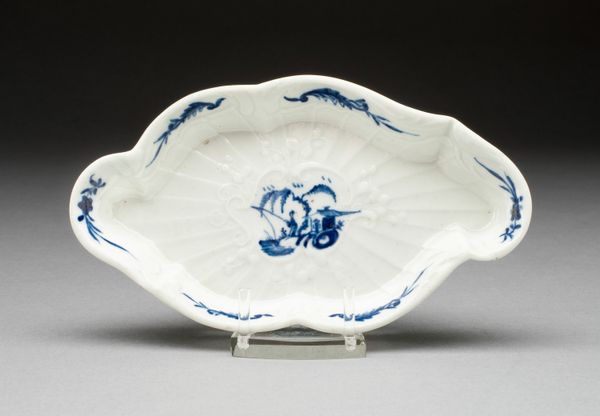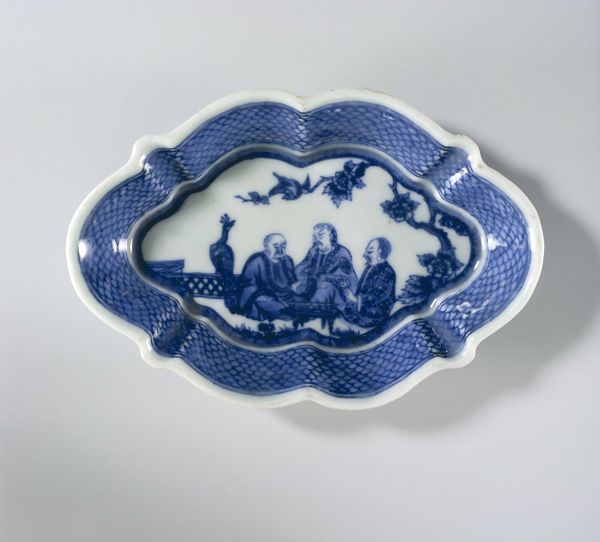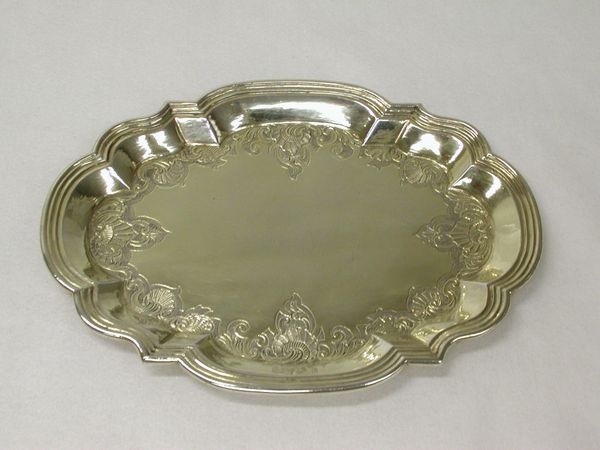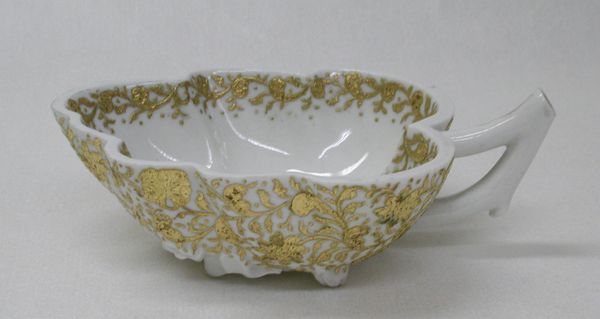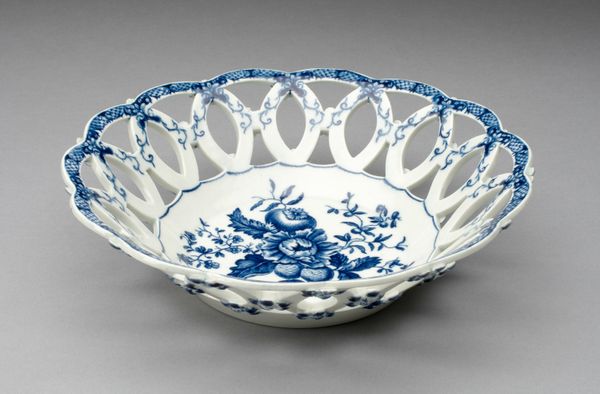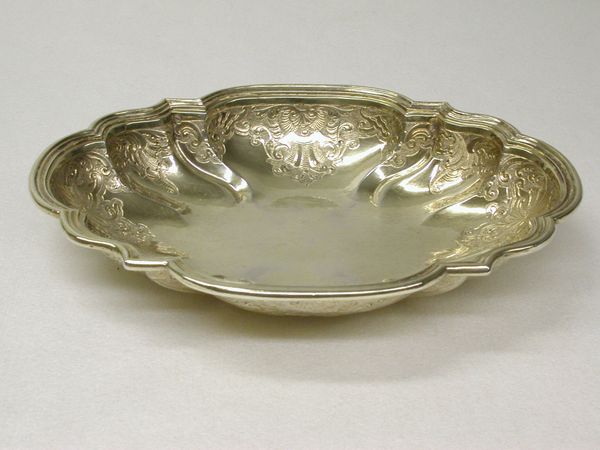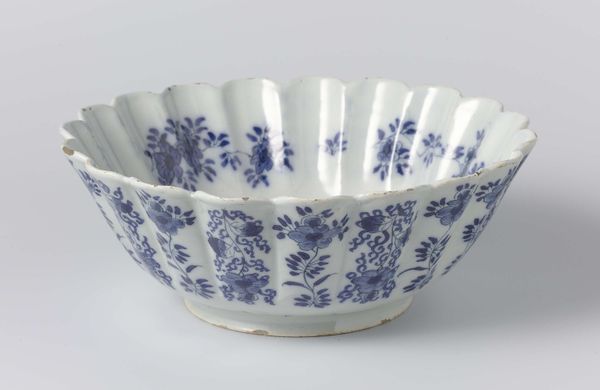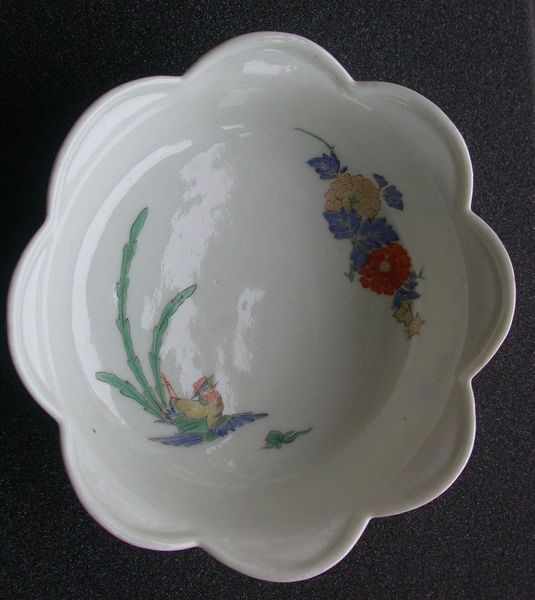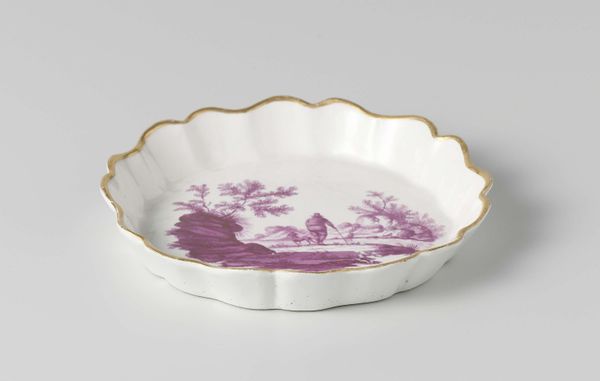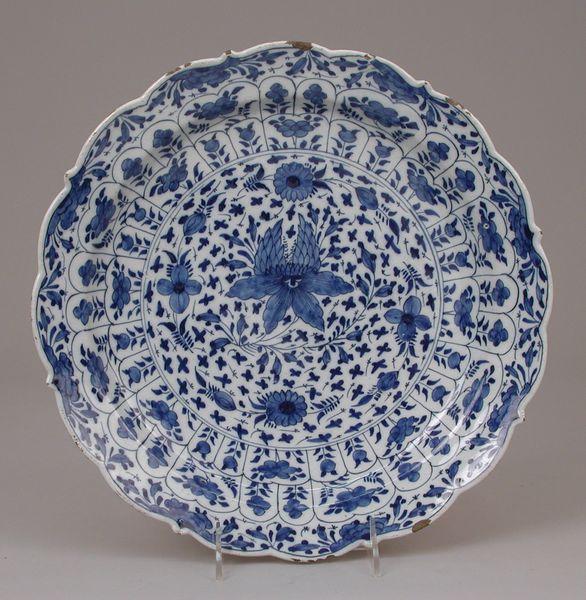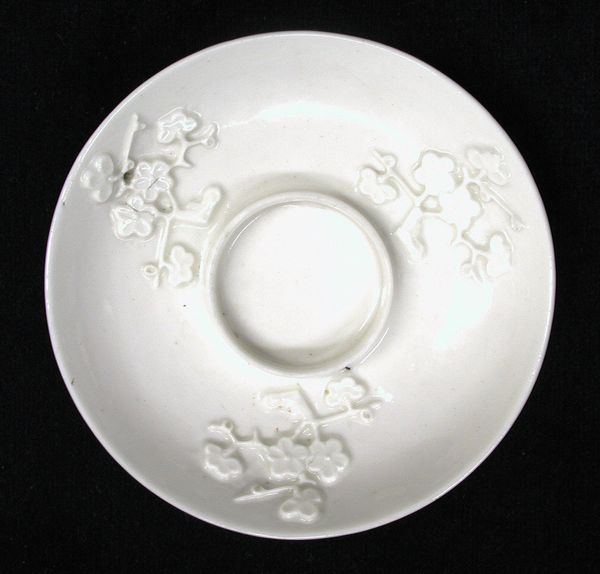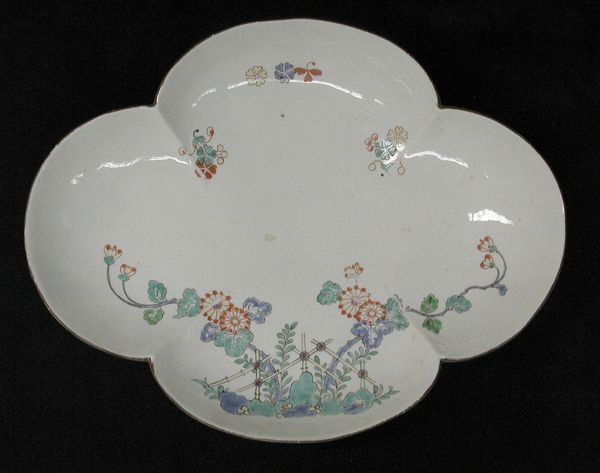
ceramic, sculpture
#
landscape
#
ceramic
#
sculpture
#
decorative-art
#
watercolor
Dimensions: Length: 8 3/8 in. (21.3 cm)
Copyright: Public Domain
Curator: This diminutive ceramic, dating from around 1833 to 1853, is listed as a pickle dish made by William Ridgeway Son & Co. Editor: It's delightful, really. The scallop form and crisp blue and white palette gives it a light, almost breezy quality. Curator: Precisely, the shell form is structurally important. Observe how the radiating flutes not only delineate space but also serve as channels that draw the eye towards the central image. Editor: That central image feels distinctly picturesque. The kind of idealized landscape a burgeoning middle class would find extremely attractive in the mid-19th century, wouldn’t you agree? I can imagine this little dish gracing a table in a comfortable suburban home. Curator: Yes, its evocation of nature is critical to understanding it. Consider the contrast between the delicate cobalt watercolor transferred onto the pure white ceramic body and the textured rendering of foliage and water; that tension underscores its artificiality. Editor: In what way is it artificial? Curator: In the way that a pastoral scene is carefully arranged and reproduced for mass consumption, transforming a simple object into a signifier of cultured domesticity. What kind of political narrative can we weave into its popularity? Editor: Oh, that’s too serious! While it represents the commodification of beauty, can we not first embrace its whimsical nature? It elevates everyday rituals with a hint of refined sensibility and an aesthetic sensibility that resonates to our current longing for natural order and delicate refinement. Curator: But if we refuse to analyze this sensibility, do we risk replicating the same socio-economic values inherent in the culture of the time? The form reflects the taste of the society, with some wealth but without aristocracy background. It is critical to know what audience embraced this style. Editor: A very interesting dish indeed, whether enjoyed on purely aesthetic terms or analyzed through the lens of social history.
Comments
No comments
Be the first to comment and join the conversation on the ultimate creative platform.
